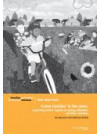Historically, youth crime has been a topic of great interest in New Zealand’s print media, but there has been little research on the families of young offenders.
This research explores the ways in which the families of young offenders were represented in New Zealand print media between 2002 and 2007. It comprises a literature review of studies on the representation of families in news media, a content analysis of published newspaper articles and a qualitative exploration on the types of constructions used in newspaper articles.
Methodology
In the first phase of the research an extensive search for research reports, articles, book chapters and books was conducted through academic databases and Google Scholar. Whilst 128 sources were found, only 28 discussed the portrayal of families of young offenders in the media and institutional texts.
In the second phase of the research the Newztext database was used to locate a sample of New Zealand newspaper articles published between 2002 and 2007. In total, 208 articles were found. They consisted of commentaries, news articles and feature articles. Only 31 of these articles focused on the families of young offenders; the remainder mentioned the families of young offenders but focused on truancy and youth offending.
Key Results
Literature review
The literature reviewed indicated that the sole-parent family (often led by a mother) and families that differ from a perceived nuclear norm are typically seen through the media as the greatest risk to social order. Researchers observed a clear scapegoating in the media of families that are struggling and needing assistance. The research showed that rather than looking at these factors, the media texts tend to blame the family.
Quantitative findings
The quantitative analysis indicated that the families of young offenders tend not to be examined and investigated in depth in newspaper media articles. Often the family is referred to in one or two sentences which use words such as ‘solo mother’, ‘absent father’, ‘dysfunction’, ‘abuse’ and ‘poor parenting’. The families are seen as dysfunctional and in some cases families are labelled ‘crime families’ because of a generational pattern of crime.
Qualitative findings
The qualitative analysis looked at examples of articles where the family type or conditions were expanded and examined in more depth. Constructions of the families of young offenders tend to differ from mentions of the nuclear family in media reports on youth crime. When the nuclear family is mentioned it can, at times, be seen as the elixir to youth crime and society’s problems. Absent fathers, bad mothers, sole-parent families and crime families, however, are stereotypes or categories used to develop a picture of the type of family surrounding young offenders. Often these families are talked about negatively. There are instances, however, where comments are made about the strain these families are under.
When it comes to family conditions, abuse and dysfunction are key constructions used in those media reports that provide further analysis of the families of young offenders. Whilst it was evident that these constructions help to give a negative picture of the family, there were some instances where media reports talked about family strain and context in depth.

